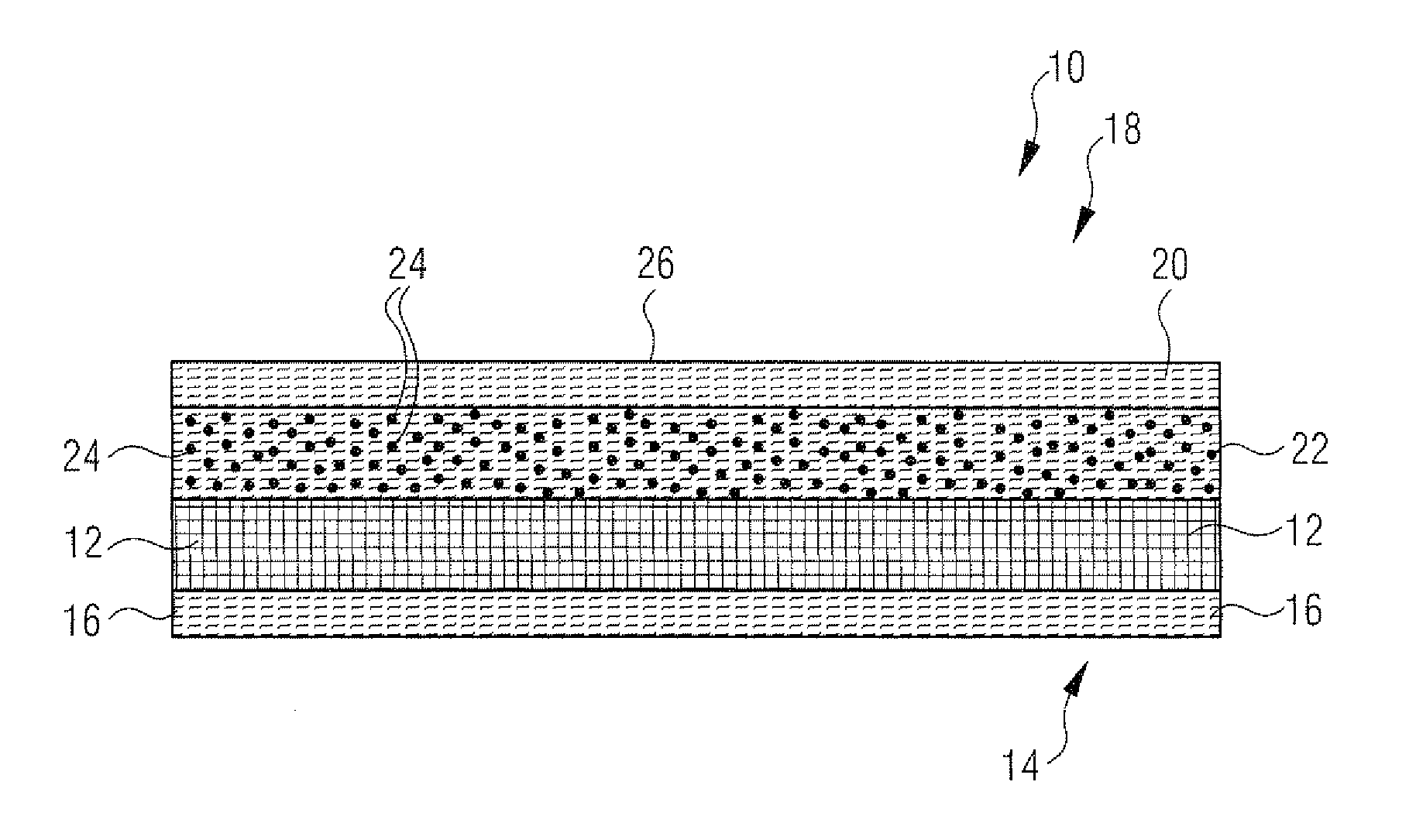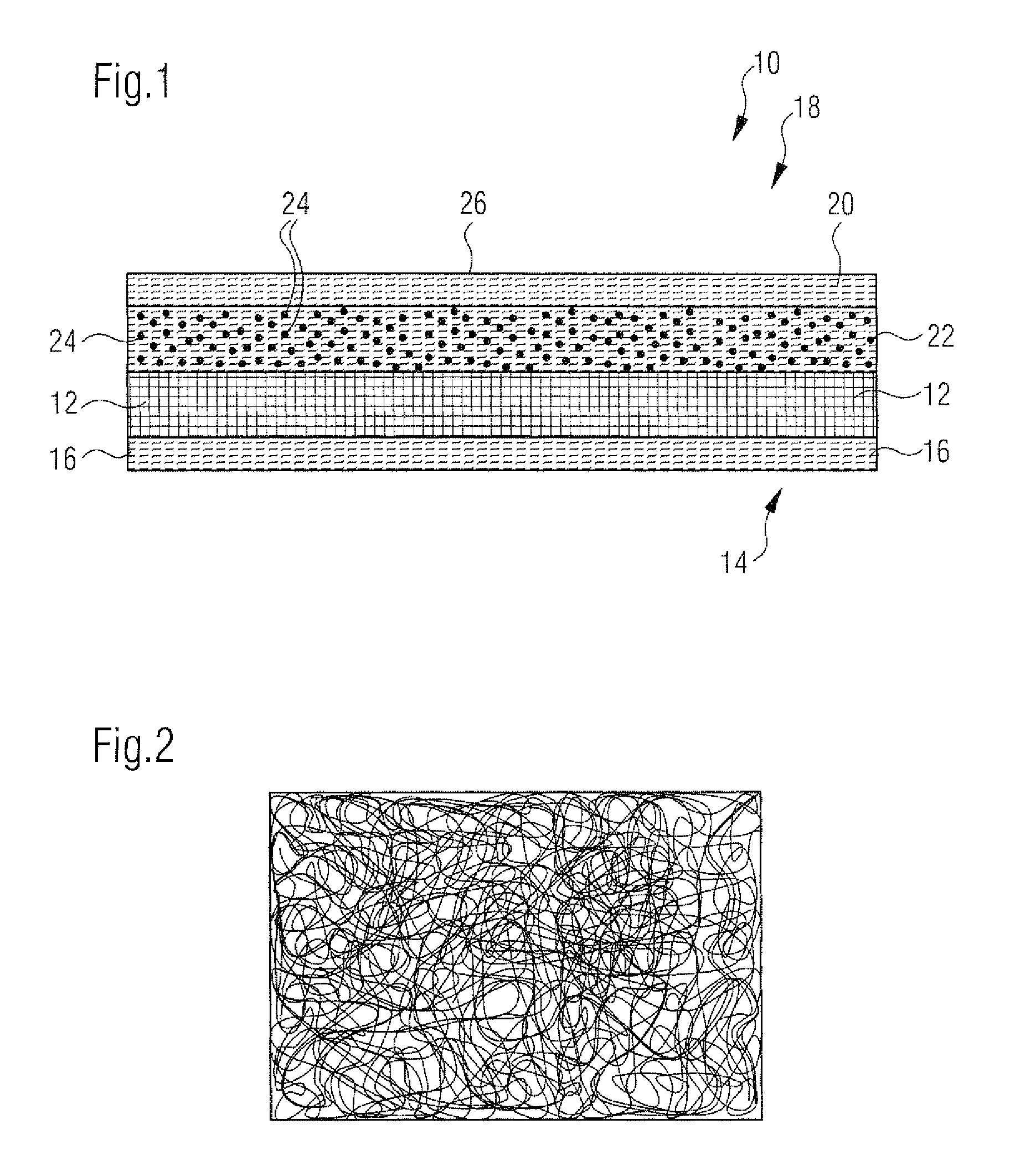Composite press fabric
a technology of press fabric and elasticity, applied in the field of press fabric, can solve the problems of high production cost of membranes, and achieve the effects of increasing the elasticity of press fabrics, and reducing the risk of remoistening
- Summary
- Abstract
- Description
- Claims
- Application Information
AI Technical Summary
Benefits of technology
Problems solved by technology
Method used
Image
Examples
Embodiment Construction
[0036]Referring now to the drawings, and more particularly to FIG. 1, there is shown a press fabric 10, which may for be utilized in a press section of a paper machine including carrying structure 12 which represents the structure that absorbs the fundamental forces and which may be in the embodiment of a woven or randomly laid structure, or a spiral-link structure. Fibrous material layer 16 is bonded with carrying structure 12 on machine contact side 14. On one side 18 of carrying structure 12 facing web material contact surface 26, two fibrous material layers 20 and 22 are bonded with carrying structure 12. The bonding of fibrous material layers 16, 18 and 20 with carrying structure 12 may occur through needling, so that individual fibers of non-woven or felt layers 16, 18 and 20 may be drawn into the next layer or carrying structure, thereby resulting in a stable bond.
[0037]Polymeric material 24 is contained in fibrous material layer 22 located between carrying structure 12 and f...
PUM
| Property | Measurement | Unit |
|---|---|---|
| depth | aaaaa | aaaaa |
| depth | aaaaa | aaaaa |
| depth | aaaaa | aaaaa |
Abstract
Description
Claims
Application Information
 Login to View More
Login to View More - R&D
- Intellectual Property
- Life Sciences
- Materials
- Tech Scout
- Unparalleled Data Quality
- Higher Quality Content
- 60% Fewer Hallucinations
Browse by: Latest US Patents, China's latest patents, Technical Efficacy Thesaurus, Application Domain, Technology Topic, Popular Technical Reports.
© 2025 PatSnap. All rights reserved.Legal|Privacy policy|Modern Slavery Act Transparency Statement|Sitemap|About US| Contact US: help@patsnap.com


